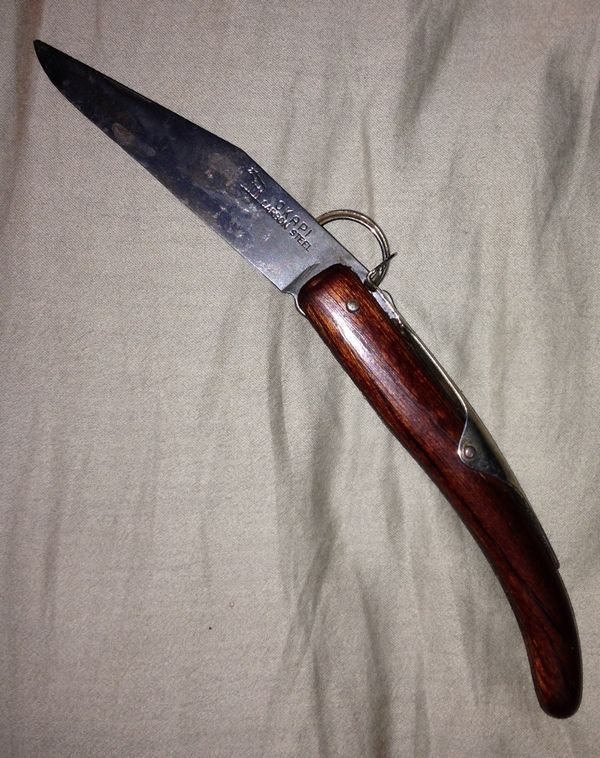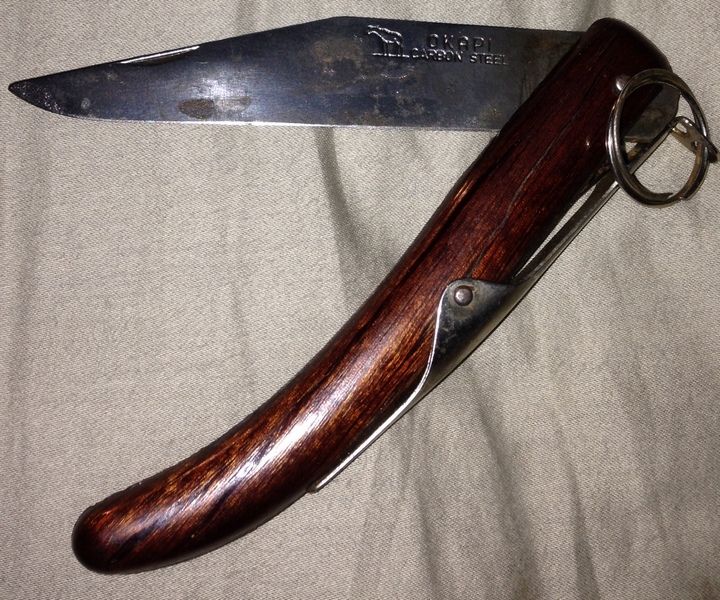Oh boy, that's a tall order. Carl P. Russell loved that style and says it dates back to colonial times and they were all over the place and then he sort of fades out on the documentation. The Kalamazoo MI public library now has the blades shown in his book that were dug up at Ft. St. Joseph. No springs were recovered and what is shown could just as easily been standard friction folder blades. Russell has the Pawnee site in Kansas but same deal- no spring recovered- it was Russell that said it was a locking blade not Smith who actually dug up the blade. The Museum at Ticonderoga- nothing with the dorsal type springs, so...I'm not really sure about their use in North America (Spain- yes, North America ??). On the oldest styles, the dorsal spring was often attached with a screw and the end of the spring was bent at a right angle and stuck in the handle. The blade also had a straight spine (no notch) and the locking prong stuck up from the spine. The bent wings with pin are later (to the best of my knowledge). What you show- the style definately dates to at least 1920. There is a similar style dating to around 1860-1870 that was found in North Carolina but the handle has multiple balls at the tip. There is a mountain man trade list that has "Spanish Lock Knives"- if I recall maybe 1834 give a year or two. BTW the term "Spanish Lock Knife" implies a dorsal spring- the style was made in Spain, France, and England.
So as others have said- maybe a replica that just got rusty or MAYBE older. Pretty hard to tell. If there are any markings- that would be a big help.


